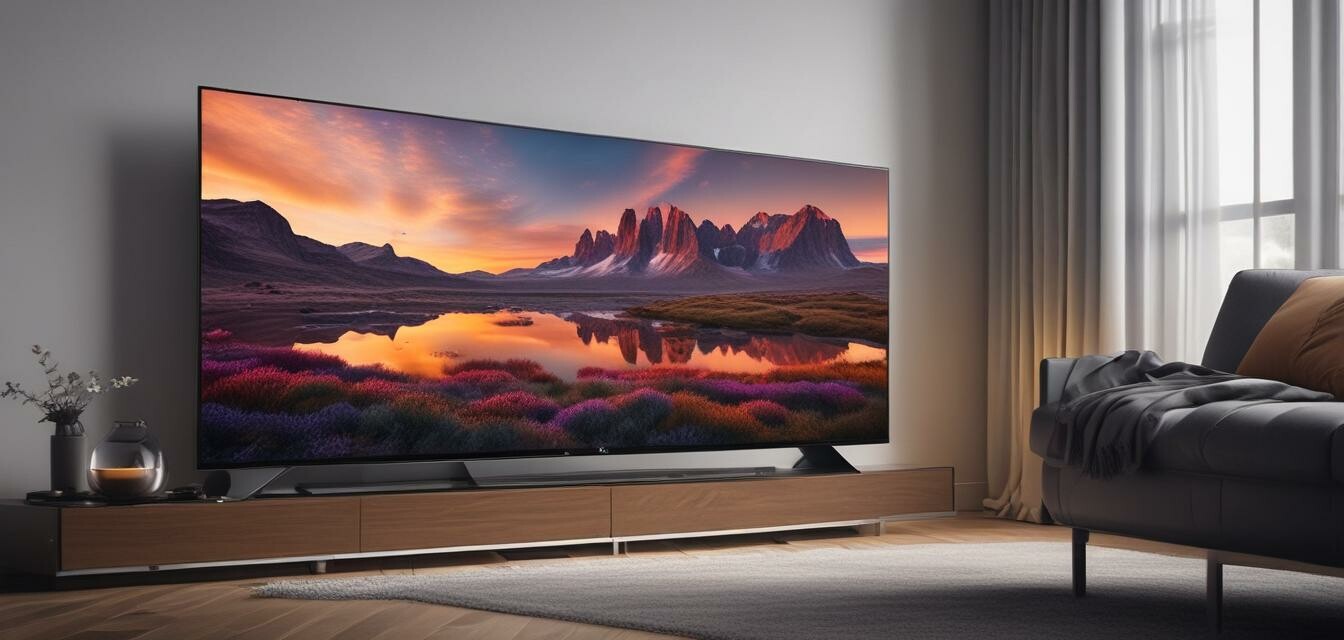
Exploring OLED vs. QLED TVs for Home Theater Enthusiasts
- OLED TVs provide superior black levels thanks to individual pixel illumination.
- QLED TVs excel in brightness and vividness with LCD technology enhancements.
- Consider size, viewing environment, and content type for optimal choice.
- Both technologies offer immersive viewing experiences, but cater to different preferences.
- For an in-depth look at setup tips, check our setup tips.
Choosing the right television for your home theater can significantly enhance your viewing experience. As home theater enthusiasts, understanding the differences between OLED and QLED technologies is crucial. In this article, we’ll dive deep into both technologies, comparing their features, advantages, and disadvantages, to help you make an informed decision.
What is OLED Technology?
OLED, or Organic Light Emitting Diode, is a display technology that utilizes organic compounds to emit light. Each pixel in an OLED display can independently produce light, allowing for stunning black levels and a high contrast ratio. Here are some key attributes of OLED technology:
- True black levels: Pixels can be completely turned off.
- Wide viewing angles: Consistent image quality from different positions.
- Thinner design: Generally results in sleeker TVs.
What is QLED Technology?
QLED, or Quantum Dot Light Emitting Diode, is a technology developed by Samsung that uses quantum dots to enhance the brightness and color accuracy of LCD TVs. Here’s what sets QLED apart:
- High brightness: Perfect for bright rooms.
- Vivid colors: Quantum dots provide a wider color spectrum.
- Durability: Generally more resistant to burn-in issues compared to OLED.
Comparing OLED and QLED
| Feature | OLED | QLED |
|---|---|---|
| Black Levels | Excellent (individual pixels off) | Good (backlight bleed prevents true blacks) |
| Brightness | Moderate | Excellent (very bright) |
| Color Accuracy | Exceptional | Very Good (especially at high brightness) |
| Viewing Angles | Wide | Narrower (colors can shift at angles) |
| Risk of Burn-In | Yes | No |
Pros and Cons of OLED and QLED
Pros of OLED
- Incredible contrast with true blacks.
- Perfect for movie enthusiasts who watch in dark settings.
- Elegant design—thin and lightweight.
Cons of OLED
- Risk of burn-in with static images.
- Generally lower peak brightness compared to QLED.
- Can be more expensive.
Pros of QLED
- High brightness levels, ideal for bright rooms.
- Robust color performance, especially with HDR.
- No risk of burn-in.
Cons of QLED
- Blacks may appear gray due to backlighting.
- Viewing angles can be restricted.
- May be bulkier than OLED models.
Choosing the Right TV for Your Home Theater
When deciding between OLED and QLED, consider the following factors:
- Viewing Environment: If you often watch TV during the day, QLED might be the better choice.
- Content Type: If you watch a lot of movies, especially in dark spaces, OLED could provide a richer experience.
- Budget: Factor in the cost and available features you're seeking.
Latest Trends and Innovations
The home theater technology market is always evolving. Some of the latest trends include:
- Increased integration of smart home technology. Explore options in our Smart Home Integration section.
- Adoption of advanced formats like 8K resolution.
- The rise of soundbars and home theater systems for an immersive experience.
Conclusion
In summary, both OLED and QLED technologies offer distinct advantages catering to different preferences and viewing environments. By understanding their features, you can make an informed decision that elevates your home theater system. For further tips on setup and maximizing your system's performance, check out more of our articles in the setup tips section.

